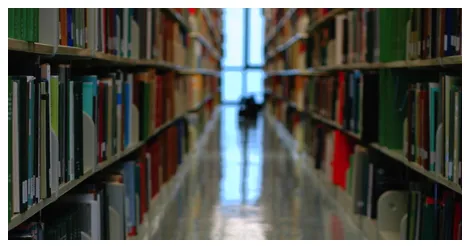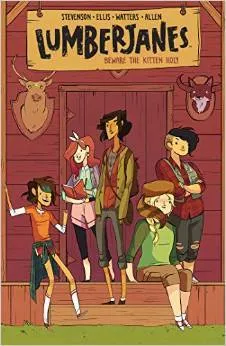
Public Library Book Displays, Diversity, and Responsibility
This content contains affiliate links. When you buy through these links, we may earn an affiliate commission.
Having made it half-way through my librarian master’s degree, I recently started a job as a student librarian—aka, librarian-in-training—at a public library. Some people in my program have been working in libraries doing various jobs for a long time, but for me, a long-time book lover and former teacher and bookseller, this was my first library job. I was SO excited! I know some seasoned librarians start to resent their “on-desk” time, where they’re tethered to the information desk out on the floor, but I was (and still am) pumped about being out there. Apart from helping library patrons with any and all of their questions (some of which are totally random and weird), the other thing I spend the most time doing is book displays—which, obviously, I also love doing.
 The book displays are sometimes themed, like when we had books on Indigenous topics out around September 30th, a day in Canada focused on recognizing the harm done in residential schools, and also just kind of general: new picture books, graphic novels and comics, new non-fiction, and new fiction. Especially in the kids section, I’ve found that like half my time is spent filling and re-filling book displays. SO many kids (and parents) take the books on display. My first reaction was, yay! My second reaction was, oh man, this seemingly mundane task is actually quite a responsibility.
If you’ve never worked at a library or bookstore, you probably haven’t thought much about book displays at all: what’s on them and who chooses what goes on them. Frankly, I’m often annoyed by book displays in big bookstores, which always seem to feature best-sellers everyone already knows about and all the books by white dudes that are already getting more than their fair share of press. The way I see it, explicitly or not, you’re essentially recommending any book you put on display and urging people to pick it up. With any reader, but ESPECIALLY kids, you can have a big impact, for better or for worse, by which books you suggest to them.
The book displays are sometimes themed, like when we had books on Indigenous topics out around September 30th, a day in Canada focused on recognizing the harm done in residential schools, and also just kind of general: new picture books, graphic novels and comics, new non-fiction, and new fiction. Especially in the kids section, I’ve found that like half my time is spent filling and re-filling book displays. SO many kids (and parents) take the books on display. My first reaction was, yay! My second reaction was, oh man, this seemingly mundane task is actually quite a responsibility.
If you’ve never worked at a library or bookstore, you probably haven’t thought much about book displays at all: what’s on them and who chooses what goes on them. Frankly, I’m often annoyed by book displays in big bookstores, which always seem to feature best-sellers everyone already knows about and all the books by white dudes that are already getting more than their fair share of press. The way I see it, explicitly or not, you’re essentially recommending any book you put on display and urging people to pick it up. With any reader, but ESPECIALLY kids, you can have a big impact, for better or for worse, by which books you suggest to them.
 For example, when the kids graphic novels / comics needed re-filling, I obviously put copies of Lumberjanes there because, well, I love it, and because I think it has great empowering feminist, queer- and trans-positive, and anti-racist messages for young readers. Literally 30 seconds after I had put it out, I saw a girl grab it. Success! I put our other copy of the first volume out, and it too was taken soon enough. I was so thrilled to be playing a tiny part in getting young readers to read diverse books and in promoting values that are very dear to me.
But then I started thinking about all the books on the many displays in the different parts of the library. How many of the new books featured were by white, straight, able-bodied male authors? How many of the books on the Indigenous display were actually BY Indigenous authors? How many of the kids’ books on display were about white boys (and maybe their dogs)? How was I supposed to make the time to check the books already on displays, and find diverse books to re-fill them, and do all of the other things that I’m supposed to do on my shift?
I don’t have answers for any of these questions (although I have started scanning shelves looking at authors’ surnames to quickly find some books by authors of colour to put on display). But just in case you were wondering: there’s more than meets the eye to your public library book display.
For example, when the kids graphic novels / comics needed re-filling, I obviously put copies of Lumberjanes there because, well, I love it, and because I think it has great empowering feminist, queer- and trans-positive, and anti-racist messages for young readers. Literally 30 seconds after I had put it out, I saw a girl grab it. Success! I put our other copy of the first volume out, and it too was taken soon enough. I was so thrilled to be playing a tiny part in getting young readers to read diverse books and in promoting values that are very dear to me.
But then I started thinking about all the books on the many displays in the different parts of the library. How many of the new books featured were by white, straight, able-bodied male authors? How many of the books on the Indigenous display were actually BY Indigenous authors? How many of the kids’ books on display were about white boys (and maybe their dogs)? How was I supposed to make the time to check the books already on displays, and find diverse books to re-fill them, and do all of the other things that I’m supposed to do on my shift?
I don’t have answers for any of these questions (although I have started scanning shelves looking at authors’ surnames to quickly find some books by authors of colour to put on display). But just in case you were wondering: there’s more than meets the eye to your public library book display.

One of many children’s books about residential schools.
 For example, when the kids graphic novels / comics needed re-filling, I obviously put copies of Lumberjanes there because, well, I love it, and because I think it has great empowering feminist, queer- and trans-positive, and anti-racist messages for young readers. Literally 30 seconds after I had put it out, I saw a girl grab it. Success! I put our other copy of the first volume out, and it too was taken soon enough. I was so thrilled to be playing a tiny part in getting young readers to read diverse books and in promoting values that are very dear to me.
But then I started thinking about all the books on the many displays in the different parts of the library. How many of the new books featured were by white, straight, able-bodied male authors? How many of the books on the Indigenous display were actually BY Indigenous authors? How many of the kids’ books on display were about white boys (and maybe their dogs)? How was I supposed to make the time to check the books already on displays, and find diverse books to re-fill them, and do all of the other things that I’m supposed to do on my shift?
I don’t have answers for any of these questions (although I have started scanning shelves looking at authors’ surnames to quickly find some books by authors of colour to put on display). But just in case you were wondering: there’s more than meets the eye to your public library book display.
For example, when the kids graphic novels / comics needed re-filling, I obviously put copies of Lumberjanes there because, well, I love it, and because I think it has great empowering feminist, queer- and trans-positive, and anti-racist messages for young readers. Literally 30 seconds after I had put it out, I saw a girl grab it. Success! I put our other copy of the first volume out, and it too was taken soon enough. I was so thrilled to be playing a tiny part in getting young readers to read diverse books and in promoting values that are very dear to me.
But then I started thinking about all the books on the many displays in the different parts of the library. How many of the new books featured were by white, straight, able-bodied male authors? How many of the books on the Indigenous display were actually BY Indigenous authors? How many of the kids’ books on display were about white boys (and maybe their dogs)? How was I supposed to make the time to check the books already on displays, and find diverse books to re-fill them, and do all of the other things that I’m supposed to do on my shift?
I don’t have answers for any of these questions (although I have started scanning shelves looking at authors’ surnames to quickly find some books by authors of colour to put on display). But just in case you were wondering: there’s more than meets the eye to your public library book display.












